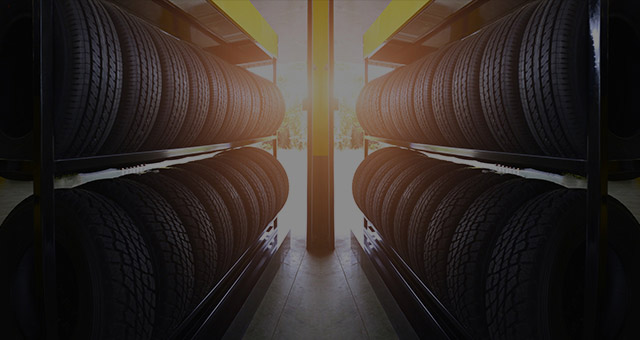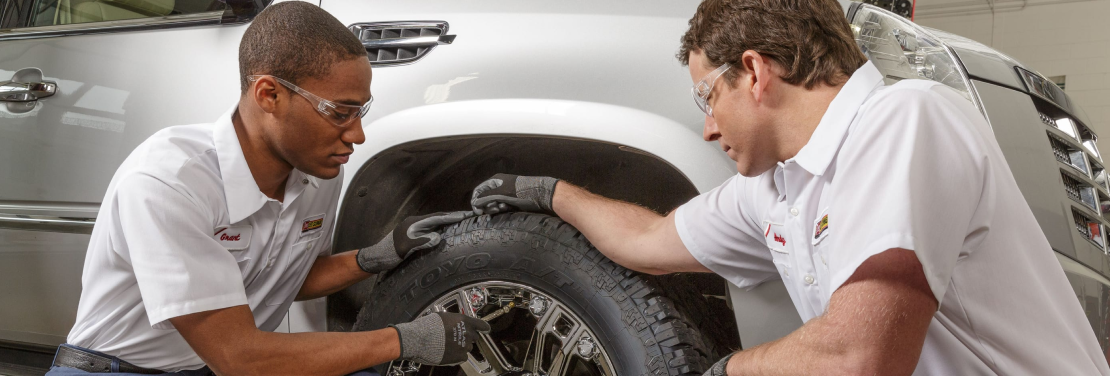Get Professional Tire Solutions at Tire Shop Morris: Fulfillment Ensured
Get Professional Tire Solutions at Tire Shop Morris: Fulfillment Ensured
Blog Article
Tire Solution: Recognizing Tire Stress Monitoring Solutions
Comprehending Tire Pressure Surveillance Solutions (TPMS) is an important element of preserving ideal vehicle efficiency and safety when traveling. With improvements in auto technology, TPMS has actually come to be a typical feature in modern lorries, supplying real-time details on tire stress levels. Delving deeper into the details of TPMS, one can reveal the various parts that comprise this system and the relevance of each in guaranteeing accurate tracking. From direct to indirect TPMS systems, the landscape of tire stress surveillance varies, each with its one-of-a-kind collection of benefits and considerations. Stay tuned to unravel the intricacies of TPMS, from maintenance ideas to the obvious advantages of maintaining your tires properly pumped up. tire shop morris.

Value of TPMS
The relevance of Tire Stress Tracking Systems (TPMS) exists in their capacity to boost automobile safety and performance with real-time tracking of tire pressure degrees. Preserving the correct tire pressure is crucial for making sure optimal handling, braking, and overall safety of an automobile. TPMS offers chauffeurs with prompt responses on any overinflated or underinflated tires, permitting timely modifications to be made.
Elements of TPMS
Making up different important aspects, a Tire Pressure Surveillance System (TPMS) operates as an innovative safety and security attribute in modern lorries. The primary components of a TPMS include sensing units, a control component, and a warning indicator. Sensors are typically located in the tire valve stem or affixed to the wheel assembly, where they determine tire pressure and transmit data to the control component. If it identifies substantially reduced pressure in any of the tires, the control component procedures this info and triggers a warning. The caution indicator, typically a sign on the control panel, alerts the vehicle driver to inspect the damaged tire or tires. Some progressed TPMS designs likewise display the actual tire stress analyses for every tire, providing chauffeurs with real-time information to make certain ideal tire performance and safety. By keeping an eye on tire stress continually, TPMS helps avoid crashes, decreases tire wear, and enhances gas efficiency, making it an important component for lorry safety and performance.
Kinds of TPMS

On the various other hand, indirect TPMS depends on the vehicle's wheel rate sensing units to monitor tire pressure. This system discovers underinflation by comparing the rotational rates of the wheels. Indirect TPMS is much less pricey than straight TPMS, as it makes use of existing sensors within the car.
While direct TPMS provides much more exact readings, indirect TPMS is less complex in style and generally requires much less upkeep. Both systems have their constraints and advantages, and the selection between them commonly depends upon aspects such as expense, automobile make, discover here and personal choice. Comprehending the differences between these two sorts of TPMS can help car owners make educated choices regarding tire upkeep and security.
TPMS Upkeep Tips
Efficient upkeep of TPMS is essential for making certain ideal efficiency and safety and security of your vehicle. Consistently evaluating the TPMS sensing units for any kind of damage or rust is important. Make certain that the sensors are complimentary and tidy from debris that might interfere with their functioning. Additionally, it is suggested to examine the sensing unit batteries regularly and change them as needed to assure exact analyses. Conduct regular look at the tire stress levels and compare them with the TPMS analyses to ensure they are constant. If there are any type of discrepancies, rectify the system following the producer's standards. Moreover, throughout tire rotation or replacement, see to it that the TPMS parts are handled meticulously to stop any kind of possible damage. Last but not least, if the TPMS advising light brightens on the control panel, deal with the problem promptly by inspecting the tire stress and the general system for any kind of faults. By sticking to these upkeep ideas, you can extend the lifespan of your TPMS and enhance the safety of your driving experience.
Benefits of Proper Tire Stress
Maintaining correct tire stress, as stressed in TPMS Maintenance Tips, is crucial for reaping the many advantages related to ideal tire pressure levels. One of the primary benefits of maintaining the appropriate tire pressure is enhanced gas performance. When tires are correctly blown up, there is much less moving resistance, bring about much better fuel economic climate. Additionally, correct tire pressure makes sure even tire wear, prolonging the lifespan of the tires and promoting much safer driving conditions. With the appropriate tire pressure, automobiles additionally have much better handling and grip, especially in negative climate condition. This can boost total driving efficiency and security for the driver and travelers. Preserving optimal tire stress can add to a smoother and more comfortable experience by lowering vibrations and sound triggered by underinflated tires. To conclude, the advantages of proper tire pressure exceed just tire longevity; they incorporate improved fuel effectiveness, boosted safety and security, much better car performance, and overall driving convenience.
Verdict
Finally, understanding tire stress tracking systems (TPMS) is important for keeping optimum tire stress and guaranteeing vehicle safety. By acknowledging the value of TPMS, recognizing with its parts, recognizing the different types offered, sticking to appropriate upkeep tips, and understanding the advantages of preserving correct tire pressure, motorists can improve their driving experience and prolong the life check these guys out expectancy of their tires. Proper tire stress is essential to secure and reliable vehicle operation.

Report this page